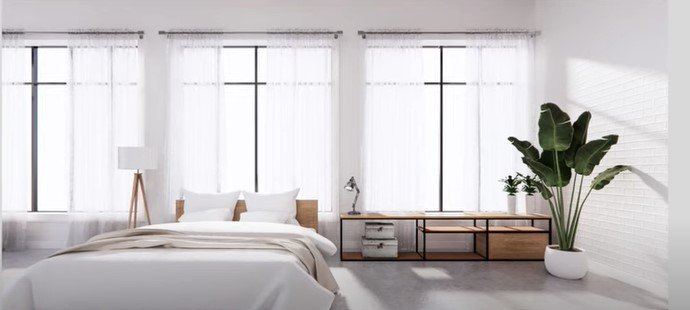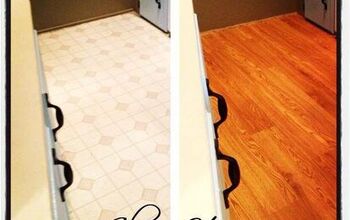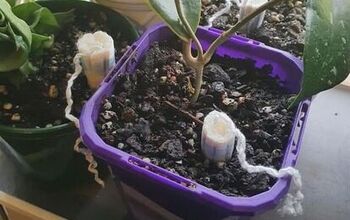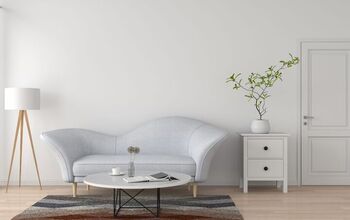12 Easy Tips to Achieve Warm Minimalism in Your Home

I’ll share with you my two essential elements that lay the groundwork for successful interior design but it also especially applies to minimalist design.
Decluttering and designing with intention are the two elements that will create a sense of warm minimalism in your home. Let me walk you through these minimalist design tips.
1. Hallmarks of minimalist design
First, let me explain that there are two words that describe every minimalist design style: clean and uncluttered.
Uncluttered spaces are a hallmark of minimalist design even when we are trying to bring in warmth and comfort. But it’s about more than just decluttering.
Once you’ve edited your items, it’s important to be intentional about how you move forward with your design decisions.
Let’s go over decluttering and how to plan your design intentionally to keep that clean, minimal look.
2. Why do you want to declutter?
It’s important to get clear why you want to minimize your possessions.
From a purely visual perspective, uncluttered often means clean lines and freedom from excessive ornamentation and visual distraction.
But from a functional perspective, it goes much deeper. If we’re looking at it as only visual clutter, you could just shove everything into closets and call it a day.
But that won’t serve you well in the long run. There are two major reasons for clearing the clutter.
3. Clutter is detrimental to our well-being
Many people cite feelings of being overwhelmed by their stuff. There’s more to clean and maintain.
Sometimes there’s so much stuff you can’t find what you have and end up buying multiples of the same item.
4. Clutter raises our stress levels
Clutter makes it difficult to relax and hinders our productivity. It keeps us from moving us forward by keeping us tied to the past, creating less space physically for the present moment and the future.
Clearing our clutter increases our ability to focus, reduces stress, means our homes are easier to keep clean, and helps us to embrace creativity and new possibilities.
5. Decluttering creates a clear canvas for your design
It’s important to edit your possessions to provide a relatively clean slate for your design.
It doesn’t mean that you have to get rid of everything, but you can.
It means keeping only what you use and love. If that means you love a piece of artwork, great.
You can build your design around that piece of artwork or at least find a place for it in your newly designed space.
6. Decluttering methods
There are plenty of decluttering methods out there, from Marie Kondo’s KonMari method to decluttering challenges to Swedish death cleaning.
Most methods use some form of categorization to help you keep track of what to keep, recycle, donate, trash, or sell.
No method is easy or perfect because they are all time-consuming and emotionally draining trying to part with sentimental items.
7. Recycle what you can
I try to recycle as much as possible.
For example, Madewell has a denim recycling program that turns your old denim into insulation. Drop your denim off at any store and you will get $20 off a new pair of jeans.
For metal recycling, I recommend taking items to a nearby metal recycling facility and you may make a little money there, too.
8. Steps for intentional design
After decluttering comes intentional design. Think about the functionality of the space and what activities will take place there and what you need to support those activities.
Even the most beautiful room will not work if it’s impractical or uncomfortable for you to use.
9. Find inspiration
Find images of rooms you’re drawn to and look for the common threads in them, such as colors, textures, lighting, or style?
Create a mood board with these images by using Pinterest.
10. The 3 words method
This method is used in fashion to find your personal style and it works really well for interiors, too.
These could be words like classic, minimal, modern, relaxed, bold–it could be any word that describes how you would like the space to feel.
Use the words to write a concept statement as your guiding light. You can use this concept statement with any other professionals you work with to keep your vision intact.
11. Gather materials
With your concept statement and mood board, begin gathering materials. Depending on the scope of the project, this could be flooring materials, paint, or wall covering samples, fabrics, or metals.
They can be photos, but try to get as many physical samples as you can to see how they look together and to view them in all light conditions within the space.
Attach these samples to a board or leave them loose on a tray or table. It’s good to have these to compare against your contractor’s materials so that everyone is on the same page.
12. Decluttering is ongoing
Once you have your design in place, you may find that you have more items that don’t serve you any longer. Decluttering is an ongoing process.
Get rid of those items and keep a donation box in an out-of-the-way spot and add things on a regular basis. This will help keep your home true to the intention of your design.
Warm minimalism
Those are the steps to achieving good, workable, and beautiful minimalist home design.
Let me know in the comments if you’ve started a decluttering process and which method you used that works well for you.
Let us also know if you’ve begun to gather materials and inspiration and what room you’re working on.































Comments
Join the conversation